- Administrator
- Albums and Singles
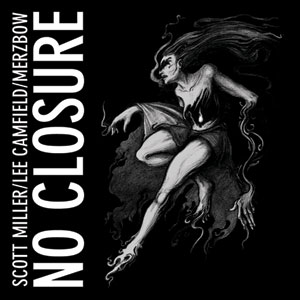
Artist: Scott Miller / Lee Camfield / Merzbow
Title: No Closure
Catalogue No: CSR185CD
Barcode: 5060174955426
Format: CD in jewelcase
Genre: Noise / Industrial / Experimental
Shipping: 30th September
“No Closure” is the collaborative output of ex-Sutekh Hexen members Scott Miller and Lee Camfield, with Japanese noise mastermind, Masami Akita, aka Merzbow. Mixing elements of psychedelia, black metal, doom and industrial music, the three musicians created a spellbinding work of experimental art.
Conceptually crafted in a dark basement recording studio in the Mission District of San Francisco and later fleshed out in Tokyo, Japan, Miller, Camfield and Akita have completely pushed the boundaries of sound far beyond their individual comfort zones. With the implementation of standard instruments being force fed through loop pedals and precise layering, multi-instrumentalists Miller and Camfield set out to build an album rooted deep in the exploitation of intentional rhythms and deliberate patterning.
Through their use of guitar, bass, drums, organs, synths and vocals, purposely devoid of their usual feedback drenched and oscillator projections, they left the inevitable incorporation of varied sound manipulation and textures strictly to Akita, thus giving birth to these two tracks. A 44 minute long masterpiece of epic mind warping experimental composition.
Tracks:1. I (20:00) / 2. II (22:00)
Read More
- Administrator
- Albums and Singles

Artist: Troum
Title: Syzygie
Catalogue No: CSR183CD
Barcode: 5060174955433
Format: CD in jewelcase
Genre: Drone / Dark Ambient
Shipping: 30th September
Formed by Glit[S]ch and Baraka[H] in 1997, Troum rose from the ashes of Maeror Tri. The duo create unbearably beautiful drones, multi-layered transcendental noise, and highly atmospheric dream-muzak.
Syzygie: Zusammenkunft und Gegenschein zweier Planeten, or: an antithetic relationship between (personified) beings of the spiritual world and their shadows.
A collection of rare / deleted tracks from compilations Vol. II (1999-2002). Everything recorded by TROUM between November 1999 and May 2002 on analogue 8-track. 9 meticulously crafted tracks, carefully compiled by Troum and delicately remastered by Martin Bowes (Attrition).
Cold Spring will release the brand new studio album from Troum in 2014.
Tracks: 1. Ater / 2. Makaria / 3. Ganymed / 4. Fantauma / 5. Uegh[Cunabula] / 6. S’engourdir / 7. Khan-Arachnid / 8. Wit Wists Fra-Qistjan / 9. Thrausmata Enos Oneirou
Read More
- Administrator
- Albums and Singles
 Troller's debut album is the perfect example of the imagery not matching the music. The late 1980s metal woman on the cover and script font screams some sort of early thrash revival, when the album contained is actually a lush, bleak piece of electronics heavy death rock from this Austin, Texas trio. The result is a disc that definitely feels rooted in that era of smeared mascara and smoke machines, but with a clearly modern day sensibility.
Troller's debut album is the perfect example of the imagery not matching the music. The late 1980s metal woman on the cover and script font screams some sort of early thrash revival, when the album contained is actually a lush, bleak piece of electronics heavy death rock from this Austin, Texas trio. The result is a disc that definitely feels rooted in that era of smeared mascara and smoke machines, but with a clearly modern day sensibility.
Holodeck/Light Lodge (LP)/Handmade Birds (CD)
The six main songs that constitute this album (with four instrumental passages between them) all work from a similar template:sluggishly paced drum machine, distorted bass guitar, complex, effects heavy synths and distant female vocals.Even though there is that similarity from one to the other, the songs all stand out unique on their own and never blend together.
"Tiger" is all slowly clapping drum machine and fuzzed out bass, but the lead here is the synth, with the vocals buried amidst the two like any other instrument would be."Milk" instead emphasizes the bass, with the keyboards twinkling away farther off in the mix.Again the voice is buried, cold and emotionless, but in the most effective way.
The strongest songs are the ones that put emphasis on the writing and structure rather than just the mood and texture."Best" is overall more spacious, with the surging bass guitar and synths underscoring the more vocal-centric performance.The vocals are still buried and low in the mix, but it feels more like the driving force here, rather than just another sonic element.
The same goes for the almost upbeat feeling, keyboard lead "Winter," which has a faster pace and again showcases the singing, although here I desperately wanted to turn the vocal track up louder than it was.The closing "Peace Dream" may not be as spryly paced, but is instead more gauzy and ethereal, rather than the bleak, occasionally oppressive sounds that preceded it.
Shades of The Cure's Faith are abundant on Troller's debut, and for my ears that is a great thing.There is that sameness that could possibly wear thin over a greater span of time, but it stays strong here.The best moments are the ones where the trio delves more into pop approaches rather than the meditative, textural pieces that are also here.Those interstitial bits also add to the record as a whole, and make the actual songs all the more effective, making for a promising introduction to the band.
samples:
 
Read More
- Administrator
- Albums and Singles
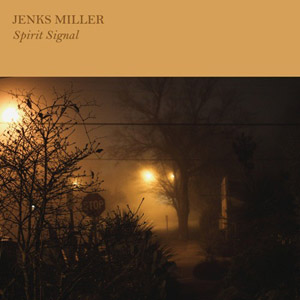 Splitting most of his time between his blackened southern rock behemoth Horseback and playing guitar for the alternative country Mount Moriah, Jenks Miller has not had much time to record true solo work. Spirit Signal is technically his third solo release, following Approaching the Invisible Mountain and the intentionally difficult Zen Automata Volume One, and is comparatively a more fleshed out album in the traditional sense, while still retaining a distinct stripped down, truly solo sound.
Splitting most of his time between his blackened southern rock behemoth Horseback and playing guitar for the alternative country Mount Moriah, Jenks Miller has not had much time to record true solo work. Spirit Signal is technically his third solo release, following Approaching the Invisible Mountain and the intentionally difficult Zen Automata Volume One, and is comparatively a more fleshed out album in the traditional sense, while still retaining a distinct stripped down, truly solo sound.
The six pieces on Spirit Signal were recorded in only three single day sessions, with seemingly few, if any overdubs.Compared to his other work, here Miller emphasizes his guitar work, as opposed to the electronics that defined Zen Automata.Both "Slide Guitar Improvisation in a Blues Style" and "Slide Guitar Improvisation in a Noise Style" are completely self explanatory works, with the former sounding a bit more traditional and the latter not quite as much noise as it is free improvisational in nature.
The brief "By the Haw" clocks in at a hair under two minutes, yet makes for an strong combination of what sounds like noisy field recordings and harmonica.It is so simple, yet results in a chilling song that conjures up a sinister, dark night in a southern forest.The title track and "Through the Fog" make for a clear pairing, both being untreated guitar playing over a droning organ passage.It again has a loose improvisational feeling, but in a very organic, inviting manner as opposed to a raw or dissonant sound.
Half of the album is made up of the nearly 22 minute "Miró," which is the closest to the Horseback project that this album gets.It keeps the sparse, bluesy guitar sound of the preceding pieces, heavily tremolo-ed but played both clean and distorted.It harkens back to the less structured, more obtuse early Horseback recordings in its stanch cyclic minimalism, even featuring vocals that are distant and moaned rather than Miller's usual demonic shrieks.
While I admittedly have been a big fan of Miller's pushing of Horseback toward more conventional structures and sounds, it was refreshing to hear him reach back to where he began.With Spirit Signal, he is producing a distillation of some of his influences, namely blues, free improvisation, and Tony Conrad influenced minimalism.It is less immediately engaging, but makes for a slow build, with everything coming together powerfully after a few spins.
samples:
 
Read More
- Administrator
- Albums and Singles
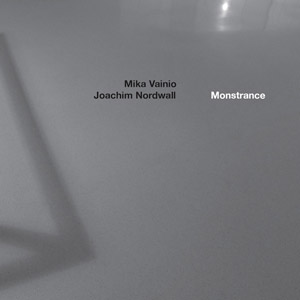 The name of the game is "metal" for this collaboration between Vainio (Pan Sonic) and Nordwall (Skull Defekts, Sons of God), both in the genre and literal sense. Fragments of Sunn O)))'s deconstructed riffs, plate reverbs and Einsturzende Neubauten's earliest days all show up here, in a wonderfully cohesive, oppressively dark recording that is surprisingly organic, given all its metal trappings.
The name of the game is "metal" for this collaboration between Vainio (Pan Sonic) and Nordwall (Skull Defekts, Sons of God), both in the genre and literal sense. Fragments of Sunn O)))'s deconstructed riffs, plate reverbs and Einsturzende Neubauten's earliest days all show up here, in a wonderfully cohesive, oppressively dark recording that is surprisingly organic, given all its metal trappings.
The long "Alloy Ceremony" is where the genre of metal is at its most overt. Dark bass guitar rumbles and resonating noises insinuate what eventually comes forth: an overt guitar part, with nearly Tony Iommi riffs. Rather than Sunn's monolithic repetitive style, it instead more varied and dynamic. The notes are spaced out over the robotic bassline, and eventually transition to a more improvised, grinding style that recalls the best of Big Black.
Beyond this, the guitar is more understated, reappearing as tortured outbursts on "Live at the Chrome Cathedral," amidst roaring electronic and nasal noise surges, leading to a monolithic wall of noise. There is a bit of fragmented six string playing on "Promethium" as well, as scrapes and plucks, coupled with the more sparse and open mix it sounds more free improvisation than metallic in nature.
Metal as an instrument is more noticeable on "Midas in Reverse," which processes scrapes and grinding noises into a collage-heavy mix riddled with ghostly noises that appear all around. On "Irkutsk" it is far more obvious, in the forms of banging and clattering noises over a basic bass guitar rhythm, reminiscent of Neubauten's earliest, most dissonant work. Which makes quite a bit of sense given this album was recorded in the legendary band's own Berlin studios.
On "Praseodymium," things are a bit lighter, even with the distended passages of feedback and hollow, metallic noises. What almost resembles a xylophone can be heard, and the greater emphasis on the midrange sonic spectrum gives it a more distinct warmth than most of the other compositions here. Similarly, "In Sheltering Sanctus of Minerals" closes the album in a drastically different mood than "Alloy Ceremony" opened it. Perched atop a low end, resonating organ, the piece is far more about sustained tone and almost hints at melody at times. Bits of feedback slowly rise to the surface, but never become too much, ending Monstrance on a more pensive, contemplative note.
Not a light recording by any means, Monstrance is an intense, rumbling piece of jagged metal that, even in its lighter moments is unsettling and uncomfortable. But despite its iron trappings and serrated surges of noise, it is indisputably organic, a sensibility that is rarely associated with Vainio's output. It comes across as natural though, and results in this bleak, moody recording that excels in its darkness.
samples:
 
Read More
- Administrator
- Albums and Singles
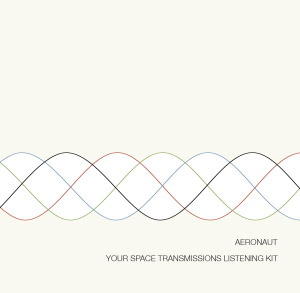
Billed as the "sonic and visual documentation of the journey of a lone astronaut into deep space, as imagined by a seven year old boy," there certainly is a lot of outer space imagery on Steve Fors' second release under the Aeronaut moniker. Conceptual trappings aside, this album is a strong piece of ambient noise that stands completely on its own as a slab of majestic tones and lush, beautiful textures.
That is not to say that the conceptual nature of the album is irrelevant:the packaging, which resembles an early 1980s kids’ science book, drives this point home with its bright colors and minimal graphics.Even more so with the inclusion of old red/blue 3d glasses, which themselves feature some rather They Live subliminal messages on them, albeit seemingly unrelated to the album.All four 15 minute pieces do an exemplary job of constructing the narrative on their own, as well.
"Preflight/Launch" is a bit overt at first, with its use of fuzzy mission control transmissions and requisite radio static, but built upon a slowly increasing bed of guitar feedback acting as a propulsive rocket engine. Eventually the noisiness retreats to allow the buried, soft tones to become the focus: a light, weightless near melody.
"My First Space Walk" also begins with one of the other overt concessions to the conceptual storyline:a pulsing, radar beacon like tone.Past this it is a dramatic synth string-like melody that is just a bit wobbly and out of tune, like a fluttering magnetic tape nearing its demise.The whole thing is appropriately dramatic and film-score like, with a slow and circular structure that continually builds upon itself.
The filtered noise and static of "Crossing the Oort Cloud," as well as the processed guitar feedback recalls the textures of the Coronal Mass debut, here mixed with a series of slowly rising and falling tones that give everything a distant, melancholy type sound to it, somewhere between dissonant and abrasive.Of all the pieces here, this one perhaps changes the least, but is no less fascinating.
The tones continue into closer "Into The Magellanic Stream," but stripped down and largely without noise.Like a sorrowful, drifting melody, it slowly becomes more and more boisterous, building to a louder and heavier volume without ever becoming too much, coming to a satisfyingly intense climax while still retaining that drifting through space feel.
Following the narrative via the overall concept and the individual song titles, Fors has done an admirable job at constructing a well rounded experience with Your Space Transmissions Listening Kit, although even if this were packaged in a plain black sleeve with only numbered compositions, this album would be just as compelling.Aeronaut expertly balances textural noise with lush, rich tones in a way that most can only dream of, and regardless of how he chooses to present it; the results have been beyond captivating thus far.
samples:
 
Read More
- Administrator
- Albums and Singles
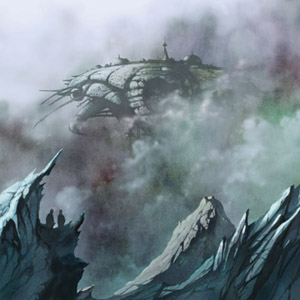 The worlds of free jazz and harsh noise have always shared a lot of commonalities: both eschew the limitations of structure and melody for the sake of pure tone and texture, and both can either come across as structured, compelling chaos, or inane, boring noodling. Burning Tree have managed to straddle that line between jazz and noise as well as few other artists have, and with unrelenting brutality, on this first full length release that stands with the titans of both genres.
The worlds of free jazz and harsh noise have always shared a lot of commonalities: both eschew the limitations of structure and melody for the sake of pure tone and texture, and both can either come across as structured, compelling chaos, or inane, boring noodling. Burning Tree have managed to straddle that line between jazz and noise as well as few other artists have, and with unrelenting brutality, on this first full length release that stands with the titans of both genres.
The two genres have always had a lot of overlap:the squall of Ornette Coleman’s Free Jazz and John Coltrane’s "Ascension" have often been cited by the likes of Merzbow and Hijokaidan as influences, both of whom have demonstrated jazz tendencies on their own recordings.But Burning Tree is pulled between those two poles unlike few others, save for Borbetomagus and the Nihilist Spasm Band.
Coming from the same European school of jazz that birthed the likes of Peter Brötzmann, this duo of Dag Erik Knedal Anderson on drums and Dag Stiberg on saxophone play with a fury and physicality that rivals that of his best work on Machine Gun or Nipples.Anderson’s drumming has the blast beat intensity of Napalm Death or even Agoraphobic Nosebleed, but with the variation and nuance of an accomplished percussionist.
At the same time, Stiberg's horn playing at times sounds nothing at all like the woodwind that it is, and instead starts to blur together like a wall of microphone feedback, such as on the breakneck paced "The Point."The shrillness is occasionally supplanted by a squeaking, exasperated sound, but the whole time it is propelled by a rhythm that sounds more like a thunderous roar than a collection of individual beats.
On "Divided," Stiberg's horn take on a nauseating, guttural quality like a slowly dying wildebeest, with Anderson's jackhammer like pounding coming together like some of John Zorn's best, heaviest work.The entire B side of the record is reserved for "No Return," a side-long piece that does not differ that much from the A side, except it is channeled into a single, non-stop composition.The squealing horns and machine gun drums continue, with the duo putting together noises that do not sound the slightest bit human.Most impressive is the breakneck pace that it follows, outpacing most grindcore records by a large margin with nary a pause or stop until the ending.
If there is a shortcoming of Lammergyer, it is its monochromatic nature.The entire album is simply a sax and drum duo, and thus while technically impressive, it can be a bit fatiguing at times.Which is no different than a good noise album, however:I love the Incapacitants, but I can only listen to them so much in one sitting before I have to switch to something else.However, the sheer force and brutality of this record, as well as its precarious balance between jazz and noise far outweigh this limitation, and actually just add to the physical intensity of listening to it.
samples:
 
Read More
- Administrator
- Albums and Singles
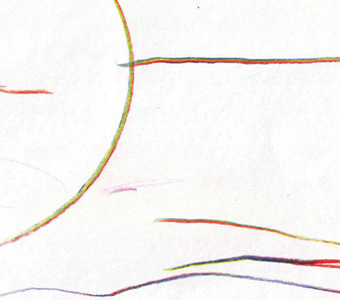 If Keith Rowe and Graham Lambkin haven't produced one of the most mind-bending records of 2013, they're at least high in the running. Making A shares its name with one of Cornelius Cardew's Schooltime Compositions. Written in 1967, these pieces were designed to help musicians and non-musicians develop their own methods of interpretation and music-making. They emphasize process over finished products and personal development over pretty results. Rowe and Lambkin's unusual recording emphasizes process too, but turns the spotlight on the listener. The album changes color and shape with the light. Sometimes improvised, sometimes structured; it constantly reflects its audience and hides its perpetrators. Few other records like it come to mind.
If Keith Rowe and Graham Lambkin haven't produced one of the most mind-bending records of 2013, they're at least high in the running. Making A shares its name with one of Cornelius Cardew's Schooltime Compositions. Written in 1967, these pieces were designed to help musicians and non-musicians develop their own methods of interpretation and music-making. They emphasize process over finished products and personal development over pretty results. Rowe and Lambkin's unusual recording emphasizes process too, but turns the spotlight on the listener. The album changes color and shape with the light. Sometimes improvised, sometimes structured; it constantly reflects its audience and hides its perpetrators. Few other records like it come to mind.
For over forty years, on nearly every recording and at nearly every concert, Keith Rowe has played a guitar of some kind. He has spent much of his life wrestling with the instrument, pulling it apart, recreating it, and developing a personal technique for playing it, which he compares to painting. But on Making A the guitar is gone. Rowe is credited only with "contact mic/objects/field recordings"; Lambkin with "contact mic/objects/room." A more comprehensive list for both artists would include tape dispenser, paper, pencil, scissors, water faucet, plastic, and perhaps a few other common materials and utensils.
A good deal of the record consists of Keith and Graham using these objects to draw, color, or to otherwise undertake seemingly non-musical actions. They amplify the sound of crumpled paper and the stroke of a pencil, combine those with the sound of traffic outside a window, then cut to an extreme close-up of rippling adhesive and intense noise: a car engine, the sound of gas igniting on a stove, the roar of a train speeding through New York toward Poughkeepsie. Sounds repeat themselves, others distort and fizzle out, still others reappear at different volumes with different effects applied.
Acousmatic confusion abounds, but not just with regard to the sounds. A semblance of Rowe's gestural guitaring survives this guitar-less performance, but distinguishing his contributions from Graham's borders on the impossible. Few personal identifiers survive their time-bending, space-expanding edits. That's why Rowe ditching the guitar is significant, and why the connection to Cardew's "Making A" matters.
In a 2009 interview with Jon Eyles of All About Jazz, Keith is asked if he can look five years into the future and describe where he might be musically. Rowe replies: "Obviously no, but I have a kind of sense of wanting to have a kind of performance that is based on the live experience of being. I think too many performances are actually a bit like the live performance of the CD… I think I would like what I do to be the trace of a process. It is just there in that unique moment of looking, in the opportunity to see it, and then it is gone and you can never see it again."
In the absence of melody and a solid rhythm, without clear structural markers, on a record that barely even demands its audience's attention, the musicians all but disappear, along with the music. The thought of instruments goes out the window. We're left with the fading image of two men travelling, drawing, cutting, maybe pouring a drink of water. No message comes through these events; just a sense of place, the passing of time, and movement. A trace. Making A does for its audience what Cardew's Schooltime Compositions are meant to do for the performers: give them a chance to react and interpret on their own terms.
With so little in the way, thinking creatively about the music is that much easier. What does the "A" in Making A stand for? Couldn't anyone with some pots and pans make this music too? What are the musicians trying to say by making noise like this? Is it even music? Cardew can't tell you that; neither can Keith Rowe, nor Graham Lambkin. And neither can I.
samples:
 
Read More
- Administrator
- Albums and Singles
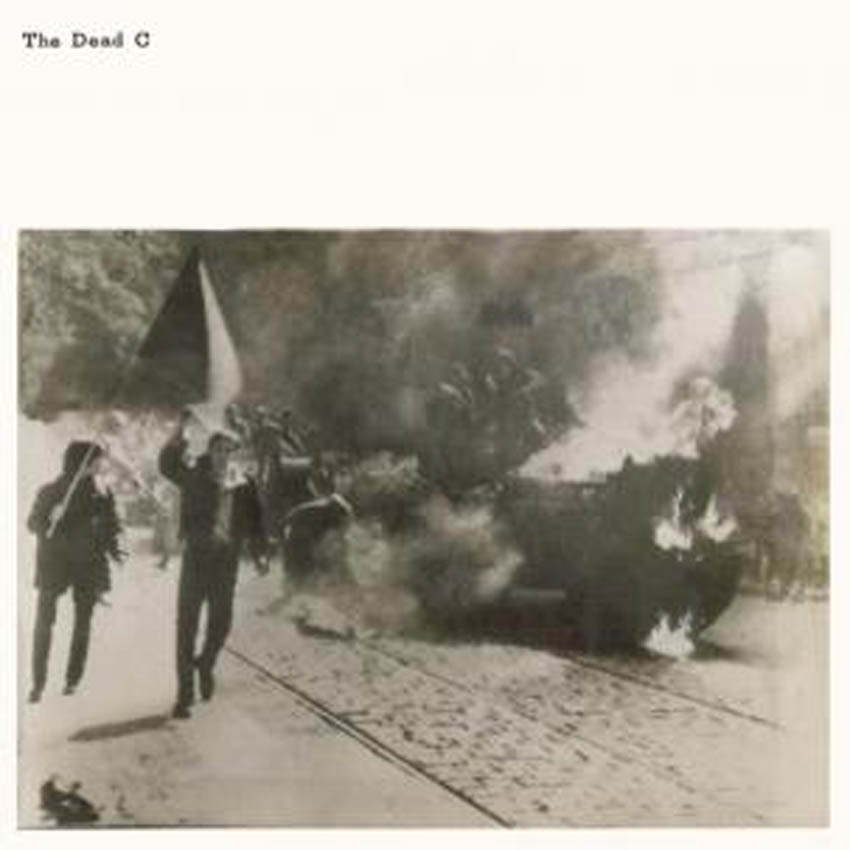 There is something endearingly heroic about The Dead C, as they have been gleefully blurring the lines between inspired deconstructionist rock and messy, half-assed indulgence to widespread indifference for almost three decades.  Unsurprisingly, this latest release finds them obstinately splashing about in the same ambiguously muddied waters as ever.  I suspect these two fairly challenging long-form pieces are unlikely to win the trio any new fans, but they are absolutely certain to please the already indoctrinated, as they rank among the group's finest.
There is something endearingly heroic about The Dead C, as they have been gleefully blurring the lines between inspired deconstructionist rock and messy, half-assed indulgence to widespread indifference for almost three decades.  Unsurprisingly, this latest release finds them obstinately splashing about in the same ambiguously muddied waters as ever.  I suspect these two fairly challenging long-form pieces are unlikely to win the trio any new fans, but they are absolutely certain to please the already indoctrinated, as they rank among the group's finest.
In their early days, Wire famously had a list of rules that defined their aesthetic, dictating that they always "stick to the point" and avoid such perils as rocking out, embracing Americanisms, or needlessly embellishing their songs in any way.  At this point in their career, I suspect The Dead C probably have an even more restrictive set of guidelines that likely includes such dictates as "no melodies, no structure, no consistent rhythm" and "never, ever seem like you are trying."  While I am being (somewhat) facetious, it is very hard to hear a song like "Armed" and not think that its genesis was anything other than "Hey, I've got a great idea for a new song: I'm going to stomp my distortion pedal and play a chord.  Then I am going to keep flogging that same goddamn chord relentlessly for the next 20 minutes with no apparent variation.  You guys in?"
While I do not think I am being too unfairly reductionist in that description, "Armed" still somehow works beautifully and avoids sounding like any of the "amplifier worship" bands (Sunn O))), etc.) that tread similar-sounding territory.  The secret seems to lie both in the details and in avoiding the expected trajectory, as guitarists Bruce Russell and Michael Morley imbue that droning chord with a great deal of simmering tension through layers of snarling wah-wah and distorted sizzle.  Drummer Robbie Yeats, for his part, alternates between clattering fills, silence, and an array of tumbling, lurching, and off-kilter martial-sounding beats.  The whole effect is quite impressive, resembling a constantly shifting smoldering wreckage of a song that never turns into anything more, yet never gets tiresome.
The second-half of the album, "Courage," arguably captures the band in "song" mode, as Morley initially mumbles and moans some half-asleep-sounding vocals over an electronic buzz, some tinkling piano, something resembling a beat, and some understated guitar abuse.  Gradually, however, Yeats' drumming gets more propulsive and the guitars get a bit harsher and the piece begins to resemble a perverse parody/homage of a motorik beat, albeit one with a drummer who has no intention of sticking to the script at all.  Then, around the half-way mark, all forward momentum halts and the piece gradually transforms into a fading, understated outro of slow-burning guitar noise that again resembles the gutted, ruined corpse of a rock song.
As far as Dead C albums go, Armed Courage is deceptively great: it initially seemed like two shambling, off-the-cuff jams to me, but the pieces all gradually fell into place after a few listens.  As inscrutable as these guys are, they definitely seem to be intuitively and inventively improvising against one another in a way that steers guitar noise into a realm that it is uniquely their own.  Notably, this is the first Dead C album where I have begun to appreciate the mad genius of Robbie Yeats' drumming, as his unpredictable transformations and derailments of even the simplest of beats keep these two songs  sounding like they could go barreling out of control at any moment.  That omnipresent sense of danger makes everything Morley and Russell play sound precarious and somewhat tense, which is no simple feat.  In anyone else's hands, an album like this would be crushingly boring: no melodic movement, no cathartic explosions–just 40 minutes of endlessly simmering guitar noise with seemingly random drums and no pay-off.  In The Dead C's hands, however, it is a refreshing and invigorating triumph of bloody-minded wrongness.
 
 
Read More
- Administrator
- Albums and Singles
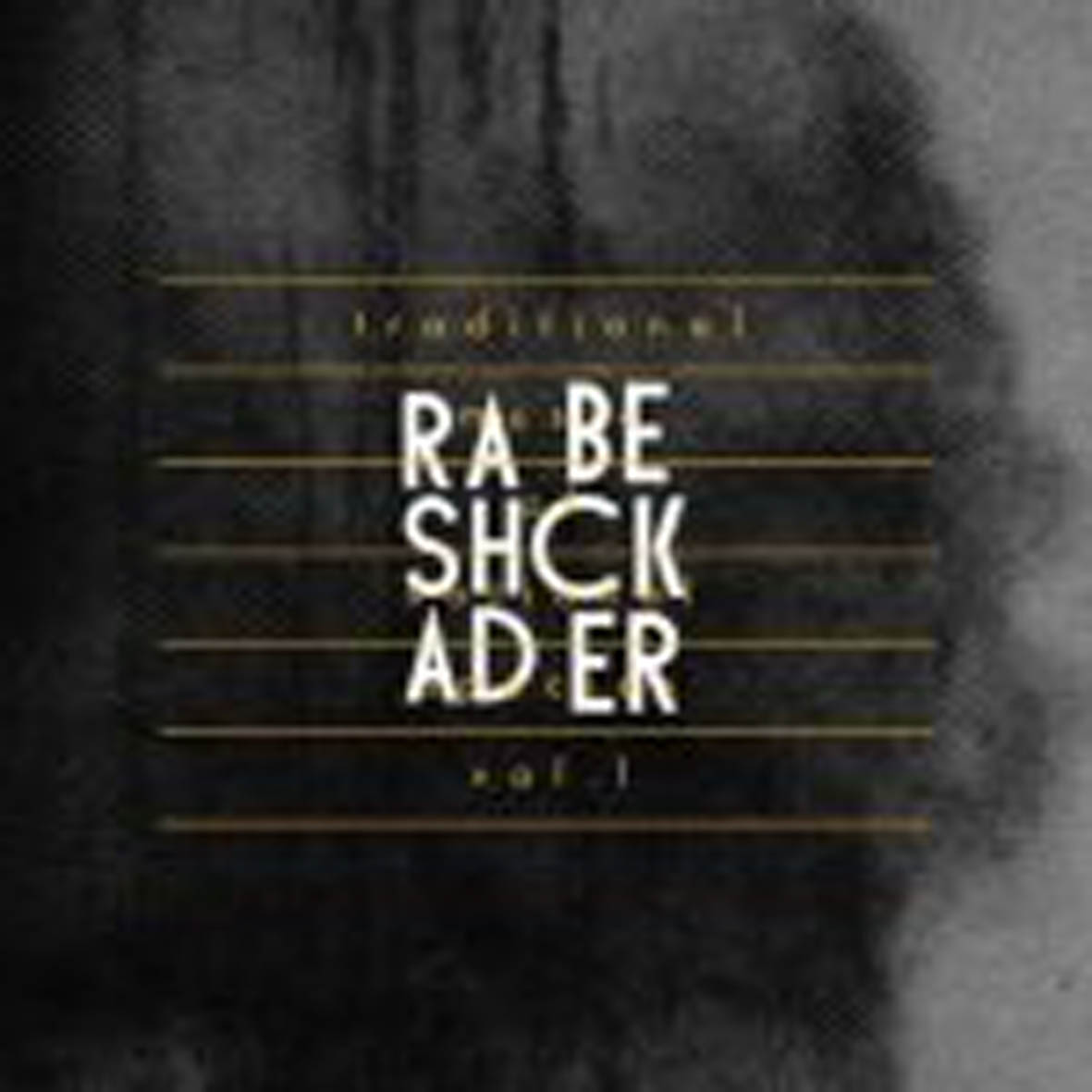 Rashad Becker is a fairly revered and influential figure in experimental music circles due to his role as the resident mastering genius at Basic Channel's Dubplates studio.  That association is a bit deceptive here, as anyone expecting anything resembling dance music will be spectacularly wrong-footed by his debut release. Becker has taken abstract experimentalism into some very exotic, disorienting, and gloriously wrong territory.  I do not think I will hear a stronger or more unique noise (or utterly uncategorizable) release this year.
Rashad Becker is a fairly revered and influential figure in experimental music circles due to his role as the resident mastering genius at Basic Channel's Dubplates studio.  That association is a bit deceptive here, as anyone expecting anything resembling dance music will be spectacularly wrong-footed by his debut release. Becker has taken abstract experimentalism into some very exotic, disorienting, and gloriously wrong territory.  I do not think I will hear a stronger or more unique noise (or utterly uncategorizable) release this year.
The most immediately striking aspect of Traditional Music is that I have absolutely no idea how Becker got the completely unhinged sounds that populate these eight pieces.  While there are a number of textures that seem like they potentially could have emerged from an abused and overprocessed modular synth, my best guess is that the album is almost entirely based on samples of field recordings that have been manipulated into unrecognizable oblivion.
While nominally divided into two suites, "Dances" and "Themes," the overall feel is of being inside a menacing, unhealthy, and lysergically warped rainforest that sometimes seems to be in the midst of a catastrophic earthquake or volcano.  That is to say: there is not a lot that could be construed as "music" per se (even by a purely notional species).  Rather, Becker crafts a sonic menagerie of impossibly vibrant, creepily metallic-sounding, and violently pitch-shifting animal and insect noises.  In fact, the rare non-animal noises that appear only serve to make Traditional Music even uglier, more visceral, and more disturbing, such as the clattering metal and horrible retching noises that embellish the crescendo of "Themes IV."
While willfully deranged, brutally processed abstract music is certainly nothing new, Becker's execution of it is quite peerless.  All of Rashad's disturbing sounds are delivered with pristine clarity and twine together to form an organically squirming and slithering tapestry of blurting and buzzing horror.  Everything seems completely deliberate and each horrible sound is allowed all the space it needs to make its full unpleasant impact.  Also, Becker never breaks his illusion with anything resembling a wrong or thematically inconsistent move, nor does he resort to using dense layering or "noise" to lend power to his mangled wildlife sounds.  Instead, all of Traditional Music's formidable menace is earned the hard way: though the meticulously interwoven interactions of just a few textures mastered for maximum presence.
It could easily be argued that this is a weirdly perfect album, as any of Traditional Music's apparent faults are entirely dependent on the perspective of the listener.  For example, anyone expecting anything resembling Basic Channel will probably find this absolutely unlistenable.  Also, even those amenable to challenging and dissonant experimental music may not like that these eight pieces all sound very similar to one another or that they do not follow any kind of dynamically satisfying compositional trajectory.  However, to critique this album for any of those reason is take issue with what Tradition Music is not, rather than what it is...and what it is is brilliant, visionary sound art.  There are few moments scattered among these eight pieces where the "music" resembles anything created by a human: it actually feels far more probable that these are actual field recordings from hell, someone's nightmares, or a very distant and  horrible planet than the product of some German guy's studio (even though I know better).  It might not be pleasant, but Becker has unquestionably crafted something truly otherworldly with no clear precedent that I am aware of.  That is a damn fine achievement indeed.
 
Read More
- Administrator
- Albums and Singles
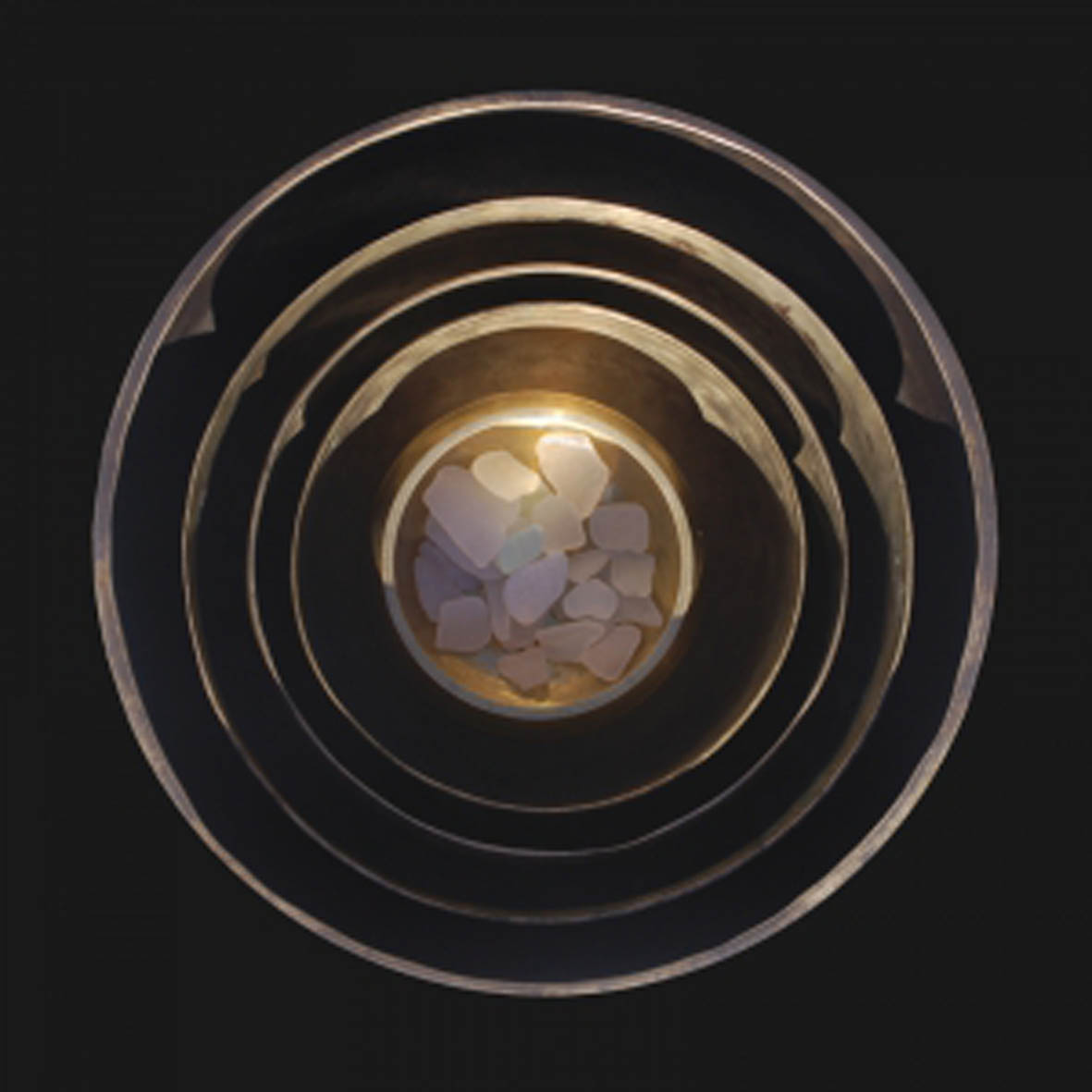 Pitre's latest offering is a fine companion piece to last year's stellar Feel Free, achieving a similar outcome through composition rather than computerized randomization.  Built upon Duane's now-characteristic pointillist plucking, shifting drone swells, and Oliver Barrett's swooping and sliding cello moans, Bridges delivers yet another swaying, languorous reverie that I could happily listen to in an endless loop.  It may not quite scale the heights of its predecessor, but that is more of a commentary on Feel Free's brilliance than it is upon Bridges' shortcomings.  In fact, in many ways, Bridges displays an impressive evolution.
Pitre's latest offering is a fine companion piece to last year's stellar Feel Free, achieving a similar outcome through composition rather than computerized randomization.  Built upon Duane's now-characteristic pointillist plucking, shifting drone swells, and Oliver Barrett's swooping and sliding cello moans, Bridges delivers yet another swaying, languorous reverie that I could happily listen to in an endless loop.  It may not quite scale the heights of its predecessor, but that is more of a commentary on Feel Free's brilliance than it is upon Bridges' shortcomings.  In fact, in many ways, Bridges displays an impressive evolution.
Bridges takes its name from Pitre's original plan for the album, which was to "bridge" traditional Eastern music with Western forms like medieval religious music and Modern Classical.  I am not sure if the project gradually evolved into something different along the way, but the influence of Western music is not especially apparent to me in the finished work, aside from the instrumentation used and Duane's willingness to get a bit dissonant.  That is not a complaint by any means, but the album's most significant traits seem quite indebted to Eastern drone, as Pitre eschews anything resembling a strong beginning or end and focuses much more on the harmonic interactions of sustained notes rather than on crafting any sort of graspable, discrete melody.
Much like its predecessor, Bridges is ostensibly divided into multiple parts, but is essentially just one long-form drone piece.  However, it can also be viewed as two separate (side-long) pieces for those who prefer their drone in 20-minute doses rather than 40-minute ones.  In addition to their structural similarities, Bridges shares a lot of common ground content-wise with Feel Free as well, in that it is essentially Feel Free Redux (sustained strings sliding and swelling above a drifting bed of plucks and drones), albeit with all of the randomness removed (and an emphasis on droning rather than on richly twinkling harmonics).
That creates an interesting predicament, as Feel Free's ingenious computer-generated bed of randomly generated harmonics was the primary reason why it was so wonderful and endlessly listenable.  Pitre gamely tries to replicate that element with his mandolin playing at various points during Bridges (with some success), but it is not nearly as hypnotically unpredictable and layered.  That is a shame, as Barrett's cello parts are wonderfully gnarled, visceral, and emotive–if  the underlying bed was nearly as strong as the string parts in the foreground, Bridges would handily eclipse Feel Free.  As it stands, it is a significantly deeper, darker, and more moving piece, but it lacks the sense of glittering infinity that its sister album possessed.
That said, Pitre has certainly proven himself to be reliably rewarding artist who is restlessly intent on getting even better.  In this particular instance, he seems to have evolved laterally rather than surging forward, but he appears to be closing in on his masterpiece regardless (which lies somewhere between Feel Free's twinkling richness and Bridges' earthier passion, I suspect).  In any case, this is yet another excellent Duane Pitre album.
 
Read More

